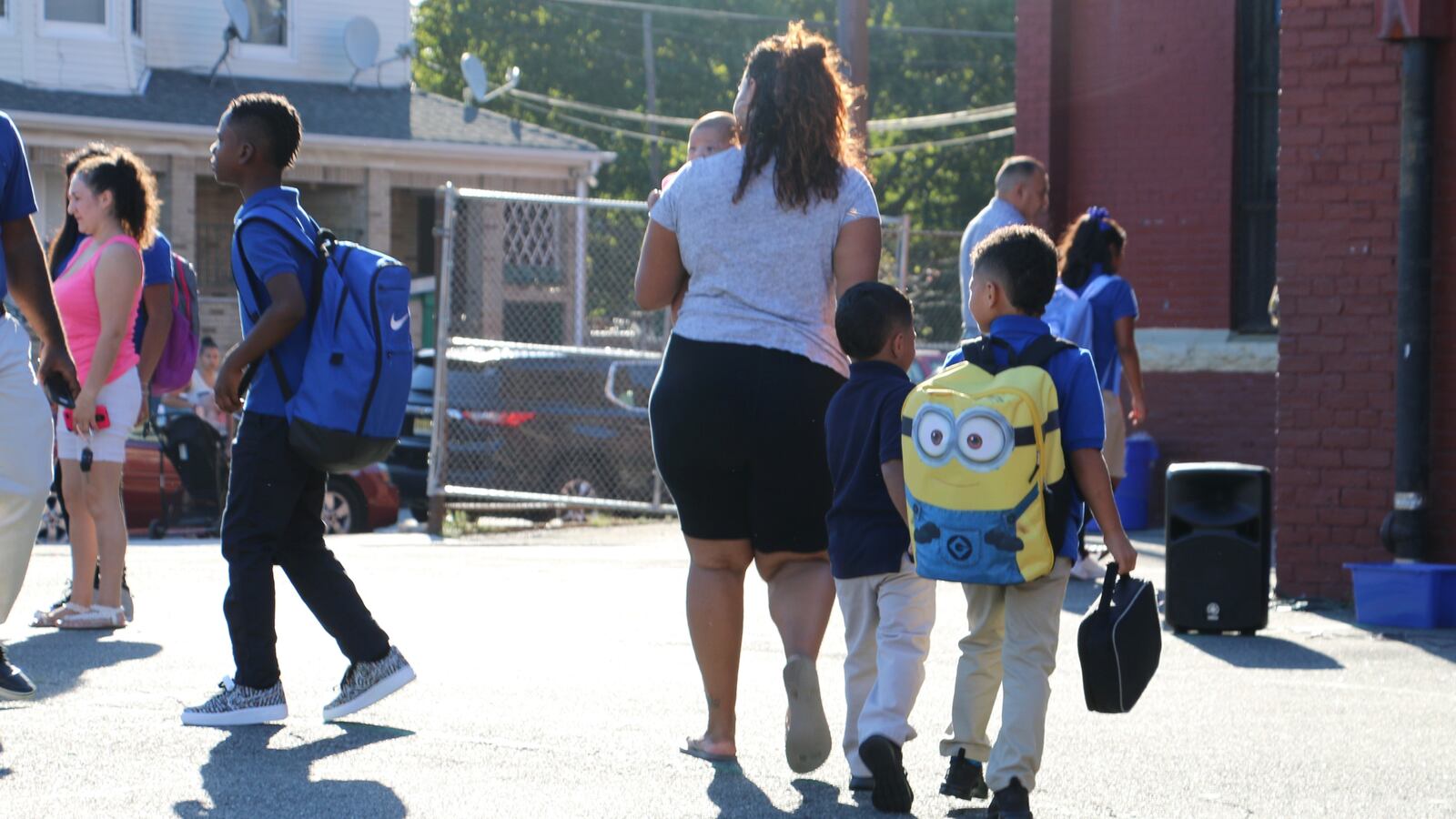For much of this year, the fate of Newark’s joint district-charter enrollment system was uncertain.
So even as charter leaders negotiated changes to the shared system with the district’s new superintendent, they began quietly developing a backup plan in case it fell apart, according to a charter-sector memo obtained by Chalkbeat.
Beginning this spring, the sector began exploring a charter-only enrollment system, the October memo shows. This fall, the sector ramped up its contingency planning: It hired the district’s recently departed enrollment director to draw up plans for a charter-only system.
Ultimately, their efforts proved unnecessary — at least for now. Last month, after prodding from the superintendent, the Newark school board agreed to retain the joint enrollment system for at least another year.
Still, the behind-the-scenes planning shows how seriously some charter leaders took the threat that the five-year-old enrollment system, called Newark Enrolls, could unravel. And it illustrates their fear of returning to what many charter proponents consider the bad old days, when each charter school had to convince families to apply to it separately because no universal application form existed.
Michele Mason, executive director of the Newark Charter School Fund, an advocacy and school-support group, said the sector was simply doing it “due diligence” in case negotiations with the district over Newark Enrolls broke down. She added that the sector developed a plan for how to create a charter-only enrollment system, but did not actually build one.
“We’re trying very hard to keep one system because we believe that’s in the best interest of kids and families,” Mason said. “But things could change here in Newark, and somebody could change their mind on one system, so we were just committed to not being caught flat-footed.”
The citywide enrollment system, originally called “One Newark,” has been divisive since it launched in 2014. It upended the tradition of families registering in person at their neighborhood school or entering admissions lotteries at individual charter schools. Instead, they could list up to eight district or charter schools on a single application before being matched to one school.
Early on, the new computerized system failed to match some students with any school and sent some siblings to schools in opposite ends of the city. Meanwhile, charter critics saw it as a scheme to divert students from the district into charter schools.
In 2016, the city school board passed a resolution to dismantle the system. But the move was mainly symbolic because the district was still under state control. Then, in February, the state ended its 22-year-long takeover and handed control back to the school board. Suddenly, the future of Newark Enrolls was in doubt.
Around that time, a few board members undertook a review of the enrollment system, which included talking to charter leaders. The charter leaders were left with the impression that some board members wanted separate district and charter enrollment systems, according to the charter memo.
At that point, sector began developing “contingency plans” for a charter-only system, the memo says. The idea was that if families could not longer apply to district and charter schools through a single system, they at least would not have to apply to each charter school separately.
Charter leaders’ fears grew in late June when the district’s new board-selected superintendent, Roger León, forced out dozens of administrators and top officials — including two who oversaw enrollment, Kate Fletcher and Gabrielle Ramos-Solomon. The board blocked their firing but both eventually resigned, leaving the enrollment office without a leader.
Around the time of León’s leadership shakeup, the Newark Charter School Fund hired a “research group” to study the computer program the district uses to match students with schools “so it can be replicated if needed,” according to the memo, which did not name the group.
Then tensions appeared to ease. In July, León assured charter leaders that he would protect the joint enrollment system. The two sides began negotiating the terms of an annual agreement that spells out how the system should operate.
Worried about the lack of leadership in the enrollment office and potential staff reductions, charter leaders pushed for a provision in the agreement that says the district must maintain “the quality and quantity of personnel necessary” to operate Newark Enrolls. The district accepted that change then proposed its own — an end to the practice of sending charter schools extra students to offset those who leave over the summer — which became a major sticking point. (The final agreement does not explicitly ban or allow the practice.)
Amid those talks, the charter sector hired Fletcher, the former district enrollment official, to develop a plan for “operationalizing” a charter-only enrollment system, according to the memo. That included contacting possible vendors and staffers to run the system, the memo says. (Fletcher did not respond to an email seeking comment.)
Eventually, district and charter leaders settled on the language of the agreement. At a board meeting on Nov. 12, Superintendent León made a forceful case for keeping the joint enrollment system, saying it eased the application process for parents and gave them more options. The board voted to approve it.
However, the vote was more a temporary truce than a permanent end to the battle over Newark Enrolls.
Board Member Leah Owens, who abstained from the vote, said during the meeting that the system was costly for the district to maintain and amounted to a district endorsement of charter schools. Board Member Reginald Bledsoe said he was only voting for the agreement because the district had not yet created an alternative enrollment system.
“We talked at great length with the community that we wouldn’t be moving forward with this system,” Bledsoe told the superintendent during the meeting. “When will this plan come to a halt?”

